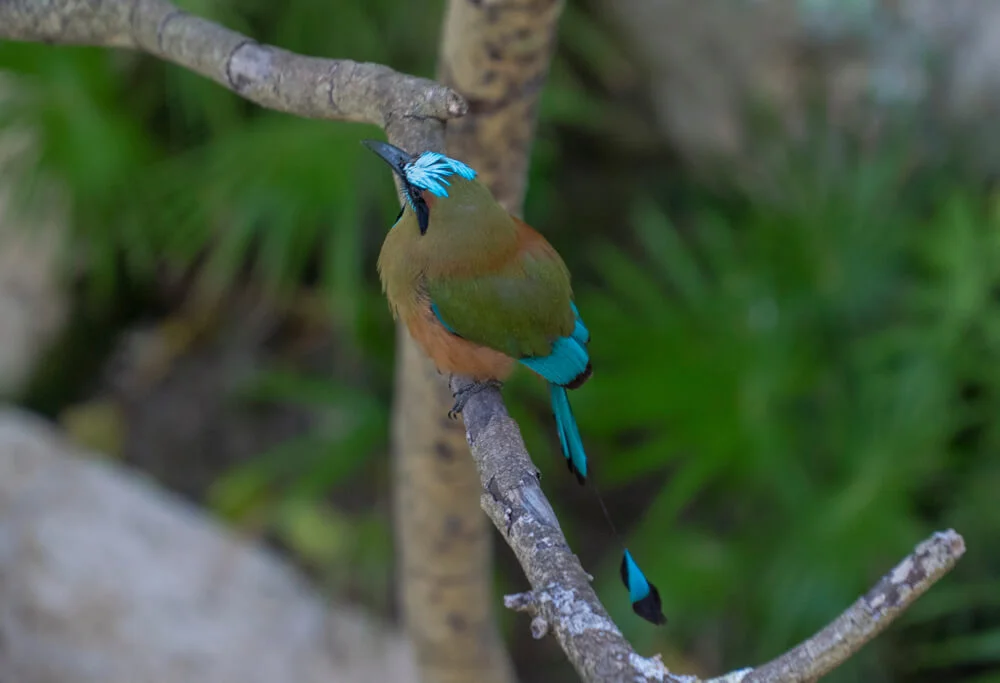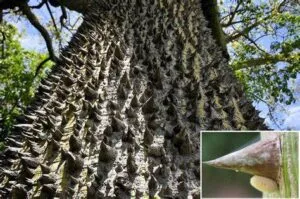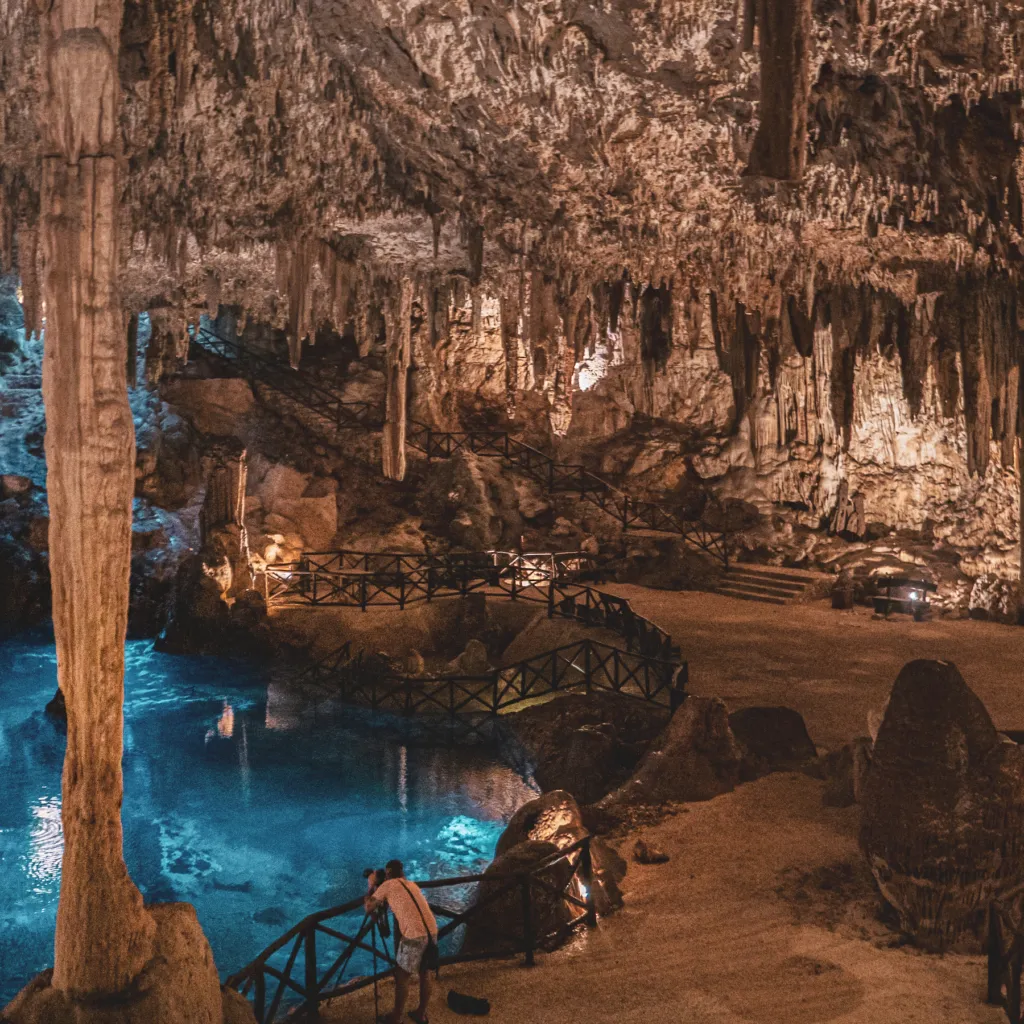The Yucatán region is a fascinating destination that blends natural beauty, ancestral history, and cultural diversity. We invite you to discover two of its most representative species: the Toh bird and the Ceiba tree. Apart from being part of the rich flora and fauna of the area, these species hold profound significance for the Maya civilization, which inhabited and flourished in these lands for centuries.

The Toh Bird, also known as the Motmot, Blue-crowned Motmot, or Blue-browed Motmot, is a bird of extraordinary beauty. It is distinguished by its green plumage with blue and black accents, a thick curved bill, and a long, forked tail that swings like a pendulum. Its name is onomatopoeic, mimicking the characteristic sound it makes: "mot mot."
The Toh Bird inhabits the tropical jungles of Yucatán, Guatemala, Belize, and Honduras. Its diet includes insects, fruits, and small reptiles. It prefers nesting in tree cavities or ravines near water streams. This bird often lives solitarily or in pairs, and its melancholic song is particularly heard at dawn and dusk.
For the Maya, the Toh Bird was a sacred bird symbolizing the connection between the earthly world and the underworld known as Xibalbá. According to legend, the Toh Bird was one of the most beautiful and vain birds of the jungle. It refused to work and cooperate with the other birds, dedicating itself only to flaunting its tail and mocking the others.
One day, the owl, considered the wisest of them all, announced the arrival of a terrible storm. All the birds began to build a shelter, except the Toh Bird, who mocked them and retreated to its nest. The storm swept away everything, and the Toh Bird lost its nest and its tail. Desperate, it sought help from the other birds, but no one wanted to help him.
It seems you're recounting a tale or myth about the Pájaro Toh and its pact with the Lords of Xibalbá. If you need a translation or further information on this topic, feel free to ask!
The Toh Bird has become a symbol of humility and solidarity for the Maya. Today, it can be observed in cenotes such as Zazil Tunich, where it is said there is a gateway to Xibalbá. Its presence in these places allows one to appreciate both its beauty and mysticism.

The Ceiba Tree, also known as pochote, kapok, or yaxché, is the largest tree in Yucatán, reaching heights of up to 70 meters and diameters of 3 meters. Its trunk is thick and spiny, with tabular roots that provide stability. Its leaves are compound and palmate, its flowers white or pink with a sweet aroma, and its fruits are woody capsules containing seeds wrapped in cottony fiber.
It is found throughout tropical America, from Mexico to Brazil, in dry or humid areas near rivers or cenotes. Its lightweight and durable wood is used for canoes and crafts, its waterproof fiber for pillows, and its seeds for oil. It also possesses medicinal properties in its leaves, flowers, and bark.
For the Maya, the Ceiba Tree was sacred, representing the cosmic axis that connected the sky, earth, and underworld. Its branches symbolized the sky with gods and ancestors, its trunk the earth with humans and animals, and its roots the underworld with dark forces. It had four branches extending towards the cardinal points:
- East (red): fire, sun, god Kinich Ahau, quetzal.
- West (black): water, night, god Chaac, jaguar.
- North (white): air, wind, god Kukulkán, feathered serpent.
- South (yellow): earth, rain, god Itzamná, toad.
El Árbol ceiba sigue siendo venerado en Yucatán como símbolo de identidad y cultura maya, donde se le admira y respeta.

If you want to live a unique and unforgettable experience in the Yucatán region, we recommend visiting Zazil Tunich, a private cenote with a guided experience that will make you feel part of the nature and culture of this place.
Zazil Tunich means "luminous stone" in Maya, and it is a cave cenote located 20 meters underground, where you can admire thousands of stalactites and stalagmites forming whimsical and astonishing figures.
Zazil Tunich offers a 200-meter tour inside the cave, where you can learn about the history, mythology, and the significance of cenotes for the Maya, who considered them entrances to Xibalbá, the underworld.
At the end of the tour, you will arrive at a cenote with crystal-clear and shallow waters, where you can swim and refresh yourself, surrounded by a magical and mysterious atmosphere.
Don't hesitate any longer, and book your spot at Zazil Tunich, the cenote that connects you with the nature and culture of Yucatán. We guarantee it will be an experience you will never forget, making you feel part of this wonderful place.
For more information, visit our website, where you will find high-quality images and videos showcasing the beauty of Zazil Tunich, along with testimonials from people who have already experienced this adventure. You can also contact us at phone number 985 808 5827, and we will be happy to assist you.
Don't miss this opportunity and come to discover the Toh Bird and Ceiba Tree, two symbols of Yucatán's nature and culture, at Zazil Tunich, the cenote that awaits you.

$ 32,000
/ por persona

From: $ 25,000
/ por persona

$ 22,000
/ por persona

$ 19,000
/ por persona

$ 14,000
/ por persona

From: $ 1,799
/ por persona

Share:
Today I want to take you to a magical world full of mystery, where legends come to life and ancient tales...

Share:
Hanal Pixán, which in Mayan means ‘food of the souls’, is one of the most emblematic and profound festivities of...

Share:
The Mayan culture, rich in symbolism and tradition, has bequeathed to the world a series of ancestral practices and knowledge that...

